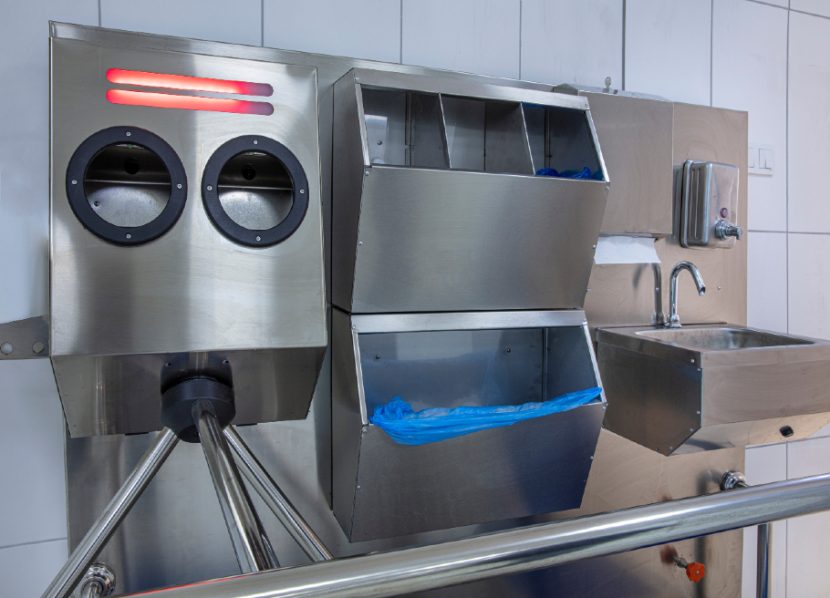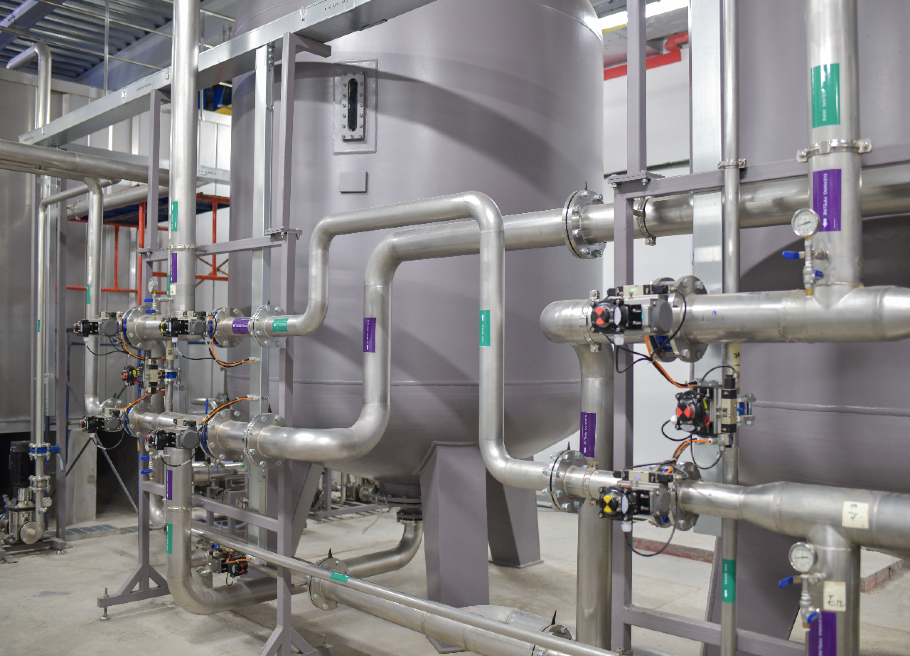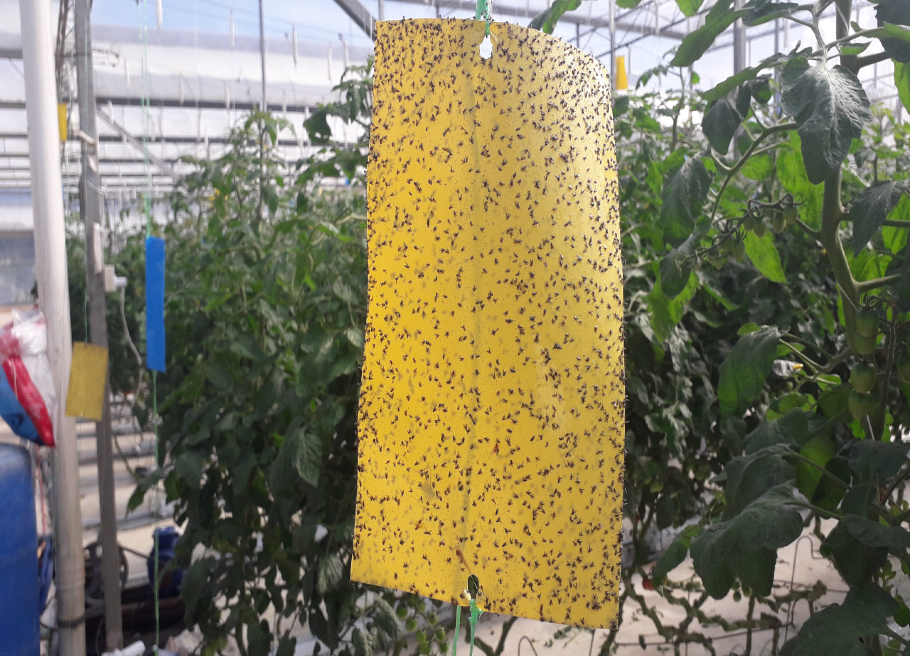CleanTech 2 – A green solution revolutionizing sanitation in the food industry
By Anselm Doering
Since the pandemic, there has been a heightened concern and awareness surrounding the uses and controls of pathogens, sanitizers and disinfectants.
“It is seen by some as the future of cleaning and disinfection for all businesses.”
This has carried over into other industries, such as farming, food manufacturing, retail supermarkets and food service operators. mostly in how they clean, sanitize and disinfect their operations and follow best practices to prevent a food borne illness. Concerns have also crossed into the food itself and how to best protect it from pathogens and prevent spoilage.
Globally, among the top concerns of food companies are food safety, pathogen control and very costly food recalls. Then there is the massive issue of food waste and its glaring statistics that reveal 40% of all food in the United States gets thrown away. About 60% of which is commercial, meaning it is thrown away before it gets to the consumer. The impact of thrown away food is enormous, considering 1 in 8 children in the U.S. do not have access to food. Not to mention the environmental issues: land, water, labor, energy, pesticides, fertilizers and other inputs that are used in producing, processing, transporting, preparing, storing, and disposing of discarded food which is by far the largest item found in landfills. Once thrown out, food waste releases high volumes of methane which is 80 times more powerful than carbon emissions.
Historically and currently the food manufacturing and service industry relies on a multitude of sanitizing chemicals in concentrates to address concerns stemming from food safety: peracetic acid, lactic acid, sodium hypochlorite/bleach, and quaternary ammonium chloride are common, everyday use chemicals. In concentrated form, all these chemicals are dangerous to handle, expensive and several leave toxic residues for their kill time against a variety of pathogens approved by the EPA and FDA. The concentrates of these chemicals are regulated and usually manufactured at one location and then shipped many miles in diesel trucks to numerous distribution centers before arriving at the ultimate end user.
Using good sanitary practices, food companies at least rinse if not sanitize and rinse their produce before packaging or putting it into service. At organic farms, or indoor hydroponic farms, the use of sanitizing rinses are not traditionally used for the pervasive concern of leaving anything synthetic, or a residue of a chemical on their food product. Furthermore, some of these food companies will use only USDA NOP-approved chemicals for organic use on produce, other food products, or food contact surfaces.
One way to address these concerns is by using ECA (Electro Chemically Activated) technology and its solutions (ECAS). ECA tech, or “on site generators” use only salt, water and small doses of electricity to produce two new streams on demand: a highly effective detergent and disinfectant, both having multiple applications in the food industry. The detergent is Sodium Hydroxide (NaOH) and the disinfectant is Hypochlorous Acid (HOCl).
Both streams produced by EcoLogic’s ECA equipment break down instantly when they hit water, leave no toxic residue, are Green Seal certified, EPA registered and have been issued an FCN by the FDA stipulating it is safe to use on food: fruits, vegetables, poultry, meat and seafood as a free-rinsing sanitizing step before putting the food into service.
ECA and its solutions can replace the need to purchase products that include high volume use all purpose cleaners, heavy duty degreasers, dish machine or laundry detergents, floor care products, all sanitizers, disinfectants and food sanitizing products. HOCl, or “hypo” has been studied and used for decades, mostly overseas. In the U.S. and globally Hypo has been used for decades in wound and eye care. When produced at near neutral pH, Hypo is known to be 100x more effective than the high pH chlorine bleach, or sodium hypochlorite (OCl-) while being far safer to humans, animals and plants. Humans and animals both naturally produce HOCl in their bodies to fight infection. In plants, Hypo is found to trigger the RNA of a plant, or its internal defense system which ultimately produces a sturdier, more resilient and productive plant with no oxidative stress.
On the sustainability front, an ECA device eliminates large volumes of plastic from having to be produced, used or disposed of, reducing harsh, polluting and toxic chemicals and carbon emissions. By making one’s own detergent and sanitizer, there is no need to ship the products all over the country to be used at an operation and produce plastic containers. Both solutions are 99.8% water and are GRAS (Generally Recognized as Safe). The ingredients of ECA tech are renewable and will not leave behind anything persistent or harmful to the environment. And, finally the user can produce solutions on demand, bypassing any concerns of supply chain constraints or fluctuations in price.
Once the pandemic hit, EcoLogic Solutions saw the opportunity to combine ECA tech with another technology, ultrasonic fogging. Ultrasonic fogging emits a water particle of 1 to 2 microns, which makes it incredibly efficient on surfaces, the air, plants’ leaves and food products by sanitizing or disinfecting them within minutes. In 2020, EcoLogic started applications of Hypo in a “dry” fog and partnered with leading research universities which have achieved compelling results, including log 4 to log 6 reductions of the most common and stubborn pathogens, such as e-coli, salmonella or e-faecalis. Further, these studies showed no toxicity to skin, lungs, animals or plants. Other studies have shown that Hypo can increase the shelf life of produce by several days.
Pre-pandemic, one struggled to hear about ECA. Today, many competitors have come to market with options that can address a wide variety of markets and consumer products. ECA is clean tech squared – it provides cleaning and sanitizing products and an eco-solution to industries that overall cuts their costs and elevates their ESG initiatives, pathogen protection and the overall safety of the operators. It is seen by some as the future of cleaning and disinfection for all businesses, homes and public arenas and as the most effective, cleanest and “greenest” chemistry in the world.
About the author:
Anselm Doering is the Founder & CEO of EcoLogic Solutions, an award winning, B corp. Certified, clean tech manufacturer of environmentally preferable cleaning products and technologies and has been in the impact business space for over 30 years. Anselm is a recognized expert in sustainability and ECA technology for commercial users, with a keen focus on food service and the Agricultural markets.

-
 FeaturedRisk management
The Cost of a Breach: What a Cyberattack Could Mean for Food Safety Recalls
FeaturedRisk management
The Cost of a Breach: What a Cyberattack Could Mean for Food Safety Recalls
-
 FeaturedRisk management
Securing the Food Chain: How ISO/IEC 27001 Strengthens Cybersecurity
FeaturedRisk management
Securing the Food Chain: How ISO/IEC 27001 Strengthens Cybersecurity
-
 FeaturedRisk management
Revolutionizing Food Safety Training: Breaking Out of the “Check-the-Box” Mentality
FeaturedRisk management
Revolutionizing Food Safety Training: Breaking Out of the “Check-the-Box” Mentality
-
 GFSI Standards
GFSI 2025: Building Trust, Tech-Forward Solutions, and Global Unity in Food Safety
GFSI Standards
GFSI 2025: Building Trust, Tech-Forward Solutions, and Global Unity in Food Safety
-
 FeaturedFood Safety
Integrated Pest Management: Strategies to Protect Your Brand’s Reputation
FeaturedFood Safety
Integrated Pest Management: Strategies to Protect Your Brand’s Reputation
-
 FeaturedFood Safety Culture & Training
No Open Door Policy: Challenges That Impact Pest Control in Food Processing Plants
FeaturedFood Safety Culture & Training
No Open Door Policy: Challenges That Impact Pest Control in Food Processing Plants




